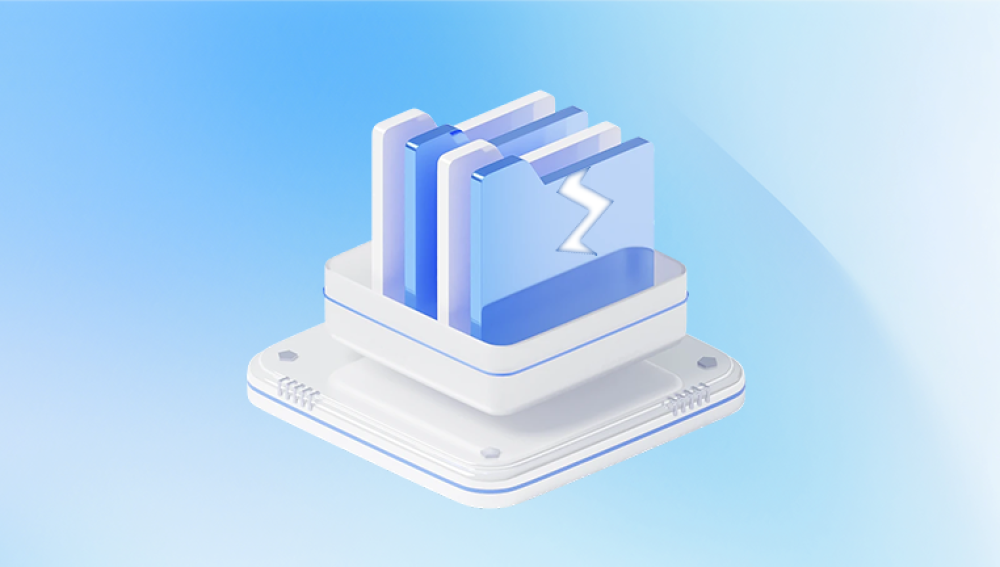File corruption is a frustrating issue for many Windows 10 users. It can cause programs to crash, documents to become unreadable, or the operating system to misbehave. Whether you're facing error messages, programs failing to open, or random reboots, corrupted files are often at the root.
Corrupt files are data files that have been damaged or altered in a way that makes them unreadable or unusable. The corruption may affect documents, system files, or applications. Some common causes include:
Sudden power loss or system crash during a save operation
Hardware issues, especially failing hard drives or memory
Software conflicts and malware infections
Incomplete or interrupted installations
Aging storage devices and filesystem errors
The impact of file corruption ranges from minor annoyances to complete system failure. Recognizing the symptoms early and taking prompt action can prevent bigger issues down the line.

Symptoms of Corrupt Files
Corrupt files can manifest in various ways. If you notice any of the following, it may indicate corruption:
Applications crash or refuse to open
Frequent error messages like “file cannot be opened” or “invalid file format”
Windows Update fails repeatedly
Blue screen of death (BSOD) errors
Missing or unreadable system files
Unusual system lag or unresponsiveness
Files that open with garbled or missing content
The key to resolving these issues lies in identifying the affected files and choosing the right tool or technique to fix them.
Step-by-Step Methods to Fix Corrupt Files
Windows 10 includes several built-in tools to repair damaged system files. In many cases, these tools can fix the problem automatically. Below are the most effective ways to resolve file corruption.
1. Use the System File Checker (SFC)
The System File Checker (SFC) is a command-line utility that scans for corrupt system files and attempts to repair them.
Steps to Use SFC:
Open Command Prompt as administrator. To do this, search for cmd in the Start menu, right-click on it, and select Run as administrator.
Type the following command and press Enter:
bash
CopyEdit
sfc /scannow
The scan will begin. It may take several minutes. Do not close the Command Prompt window until the verification is 100% complete.
Once the scan is finished, the tool will inform you whether it found corrupt files and whether it was able to fix them.
Possible Results:
No integrity violations found: Your system files are not corrupt.
Corrupt files were found and successfully repaired: Problem resolved.
Corrupt files found but could not be fixed: Proceed to the next step (DISM).
2. Run the DISM Tool
If SFC fails to fix the problem, the Deployment Imaging Service and Management Tool (DISM) can help. DISM repairs the system image that SFC uses to replace corrupted files.
To run DISM:
Open Command Prompt as administrator.
Enter the following command:
swift
CopyEdit
DISM /Online /Cleanup-Image /RestoreHealth
The process may take up to 20-30 minutes. It downloads fresh copies of files from Windows Update and replaces damaged ones.
After DISM completes, reboot your computer.
It’s a good idea to rerun sfc /scannow afterward to ensure all corrupt files are fixed.
3. Check Disk for Errors
Sometimes file corruption is due to bad sectors or file system errors on your hard drive. Check Disk (chkdsk) scans and attempts to repair them.
To run chkdsk:
Open Command Prompt as administrator.
Enter the following command:
bash
CopyEdit
chkdsk C: /f /r /x
/f fixes errors.
/r locates bad sectors and recovers readable information.
/x forces the volume to dismount before the scan.
You may be asked to schedule the scan for the next reboot. Type Y and press Enter.
Restart your computer. The scan will begin before Windows starts.
4. Perform a Windows System Restore
If the problem started recently and you have a restore point available, performing a System Restore can revert your computer to a previous state when everything was working.
How to Restore:
Search for System Restore in the Start menu and open Create a restore point.
In the System Properties window, click on System Restore.
Choose a restore point that was created before the corruption issue began.
Follow the on-screen instructions to complete the process.
5. Restore Files from Backup
If only certain user files are corrupt (documents, images, etc.), they may be irreparable through system tools. In such cases, restore them from a backup, if available.
Use File History if you’ve previously enabled it.
Use OneDrive or any other cloud backup.
Restore from an external drive or manual backup.
6. Recover Files Using File Recovery Software
Panda Repair
Corrupt files can cause major headaches on Windows 10 leading to crashes, missing data, or malfunctioning software. Panda Repair offers a user-friendly and effective solution to fix these issues quickly and safely. Whether you're dealing with broken system files, damaged documents, or corrupted application data, Panda Repair is designed to detect and restore your files with minimal effort.
Panda Repair scans your system thoroughly to locate corrupt files, then uses intelligent repair algorithms to recover and reconstruct them. Unlike built-in Windows tools like SFC and DISM, Panda Repair is optimized for deeper recovery and works not just on system files but also on personal files such as photos, videos, and documents.
Using Panda Repair is simple. After launching the program, users can select the type of scan quick or deep and target specific folders or drives. Once the scan completes, Panda Repair presents a list of affected files along with repair options. You can preview recoverable files and choose to repair them individually or all at once.
7. Reinstall the Affected Application
If the corruption is limited to a specific application, such as Microsoft Word or Adobe Photoshop, reinstalling the app might fix it. Uninstall the program from Settings > Apps, then download the latest version from the official site and reinstall it.
8. Use Windows Reset or In-Place Upgrade
If none of the above methods work, and system corruption continues, you may need to reset Windows 10 or perform an in-place upgrade.
Reset Windows 10:
Go to Settings > Update & Security > Recovery.
Under Reset this PC, click Get Started.
Choose either:
Keep my files: Removes apps and settings but keeps personal files.
Remove everything: A clean install.
In-Place Upgrade:
An in-place upgrade reinstalls Windows 10 while keeping your files, settings, and apps. You’ll need a copy of the Windows 10 ISO.
Download the Media Creation Tool from Microsoft.
Use it to create installation media.
Run setup.exe from the media while inside Windows.
Choose Upgrade this PC now, then select to keep files and apps.
Preventing File Corruption in the Future
Once you’ve repaired or recovered from file corruption, it’s important to take proactive steps to avoid it happening again.
Use a UPS (Uninterruptible Power Supply)
Sudden power outages are a major cause of file corruption. A UPS ensures your computer stays on long enough for you to save work and shut down safely.
Regular Backups
Set up automatic backups using File History, OneDrive, or an external drive. Use full system imaging tools like Macrium Reflect or Acronis True Image for comprehensive backups.
Keep Windows and Drivers Updated
Updates fix bugs and security issues that can cause instability. Enable automatic updates under Settings > Update & Security.
Avoid Unsafe Software
Avoid downloading programs or files from untrusted sources. Malware often leads to file and system corruption.
Use Antivirus Protection
Ensure you have active antivirus protection, whether it’s Windows Security or a third-party option. Run regular scans.
Monitor Your Hard Drive Health
Install utilities like CrystalDiskInfo to monitor your drive’s SMART data. Early warning signs like reallocated sectors or high temperature can alert you before failure occurs.
Use Proper Shutdown Procedures
Always shut down your PC using the Start menu. Avoid forced shutdowns, especially during updates or file transfers.
What If Only Specific Files Are Corrupt?
Not all corruption affects the operating system. Sometimes, it’s just a Word document, Excel file, or video that won't open. Here are specific steps you can take:
For Office Files:
Open the file through the Office app's Open and Repair option.
Try opening the file in a different format (e.g., .docx to .rtf).
Restore a previous version by right-clicking the file and choosing Restore previous versions.
For Images or Videos:
Try opening them in different programs (e.g., VLC for videos).
Use a file repair tool like Stellar Repair for Video or PixRecovery.
Check if the file was synced to cloud storage and download a fresh copy.
For Zip or Rar Archives:
Use tools like WinRAR or 7-Zip's repair function.
Extract individual files instead of the full archive.
When File Corruption Is a Sign of Bigger Problems
If you repeatedly experience file corruption, this could indicate more serious issues with your hardware or software environment.
Hard Drive Problems
Run the SMART check using tools like:
CrystalDiskInfo
HDDScan
Manufacturer tools (e.g., SeaTools for Seagate, WD Data Lifeguard for Western Digital)
If your hard drive has bad sectors or is failing, no repair tool will provide a long-term solution. Back up your data immediately and replace the drive.
RAM Issues
Faulty RAM can also corrupt files and system processes. Run Windows Memory Diagnostic to check:
Press Win + R, type mdsched.exe, and hit Enter.
Choose to restart and check for problems.
The tool will run during boot and report any errors.
Software Conflicts
Running conflicting programs or unstable beta software can interfere with system files. Consider uninstalling recent apps that coincide with the start of the corruption.
Corrupt files on Windows 10 can be distressing, especially when they affect your productivity or important data. However, with the built-in tools like SFC, DISM, and chkdsk, most file corruption issues can be repaired without needing professional help. It's also crucial to maintain healthy habits — such as regular backups, updates, and hardware checks — to reduce the chances of corruption recurring.




